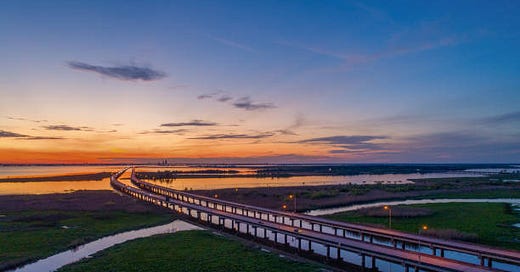
A man named John once threatened to kill me.
I was a seminarian living in Bogota, Colombia, at the time, studying Spanish and serving at a small parish just north of the central historic district of the City. After an evening Mass one day, a homeless man came up and told us his name was John. He was an American citizen who for several years now had lived trapped in South America. Whatever had brought him to the country, at a certain point John became addicted to drugs and started living on the streets. He had no identification, no passport, no way to prove himself an American citizen. He wanted to go home, but the officials at the American embassy told him there was nothing they could do for him without proof of citizenship.
The absolute desperation of John became clear to me almost immediately; here was a guy really living at rock bottom. His desperation made him tense, and dangerous, and talking to him, I had no idea how the conversation was going to work out. John became agitated and hostile. He wanted help that we couldn’t give him, help getting home to America, and he wouldn’t take no for an answer.
That is when John threatened to kill us. He told us that the only way for him to get home was to kill an American citizen—at that point, the embassy would have no choice but to extradite him back to the United States to stand trial for murder. And John made it clear to us that he would rather spend the rest of his life a prisoner in America than homeless and addicted on the streets of Bogota.
I have met many broken people in my life, but John was probably the most broken. There was something more than addiction and poverty in John, there was also this kind of desperation and intelligence that made him dangerous. He was, in my experience, the most raw and seemingly irredeemable example of human nature that I have ever met. I actually think it is pretty easy to find something good in most people, even after just meeting them. But in John I really struggled to find something good; his broken human nature went all the way down.
Yesterday, we held a concert here at the Basilica and I found myself—for reasons unknown to me—looking up at this glorious image of the Ascension and thinking about John while this beautiful music played right in front of me. St. Gregory the Great says about the Ascension that: “Our poor human nature was carried up, in Christ, above all the hosts of heaven, above all the ranks of angels, beyond the highest heavenly powers to the very throne of God the Father.” What does St. Gregory mean? He means that John was the most broken man I have ever met, and yet he still shares the same human nature as Jesus Christ, and because of the Ascension we know that human nature can be united to God for eternity.
Maybe you have never thought about that fact, but you should. Human nature doesn’t go anywhere because of Easter. A person who is saved, redeemed, still possesses the same human nature that can be broken all the way down. Salvation never gives a person a new nature, making them into something other than a human being. The Ascension shows us that the same human nature that is capable of being broken all the way down is also capable of sitting above the angels and upon the throne of God. Easter Sunday tells us that salvation is possible for human beings, but the Ascension shows us that our nature is made for God; no matter how broken, how ugly, that same human nature now rests above the ranks of angels and sits on the throne of God.
The Ascension gives us a sure foundation for hope. Hope requires that we know some future good is really possible for us, and what that means is that going second is always easier when you know the person who went first achieved the goal, reached the destination, got the job done. The mythology tell us that Pheidippides was the first person to run a marathon. He might have died as soon as he reached Athens, but the fact that he got there means that we know running 26 miles is possible. What I mean is that once someone has gone somewhere for the first time or done something that no one has ever done before, it becomes easier for others to follow.
Christ shows us through the Ascension that human nature is fit for divinity, ready-made for union with God. Where Christ has gone, we can follow, and there is a sure foundation for our hope.
The Ascension also gives us a sure foundation for charity. We talk a lot about human dignity, about the fact that human beings are made in the image and likeness of God and so possess an inviolable dignity. But we talk less frequently about the fact that human nature belongs with God. What I mean is that when we talk about human dignity, we usually focus on the beginning of the story: God creates human beings in his image and likeness to live with him in relationship. But the end of the story is just as important: Christ takes our broken human nature, and he unites to God for eternity.
The origin of human nature tells us that we need to love one another, but so does the fact of the Ascension; the end of the story matters just as much as the beginning.
The other day during the 12:10 Mass, a homeless man walked into the Basilica at the beginning of my homily, obviously on drugs and making a quiet scene by walking right up toward the sanctuary, snapping his fingers, and looking up at the sky. We see the guy about once a week, and my encounters with him are nothing like my encounters with John—he might be on drugs most of the time, but he is docile, friendly, cooperative. But it wouldn’t matter if he were hostile and desperate like John because the fact of the Ascension tells me that standing before me is a person possessed of the same nature as Christ, now united to God for eternity, and absolutely deserving of my love.
Based on the looks people gave the man as he walked around the Basilica making his quiet scene, it is obvious to me that when we meet a homeless person on the streets our first thoughts are often not of the dignity that he or she possesses because of the fact of Christ’s ascension. Our thoughts are often more judgmental, more critical, more grounded in concern for our safety or even a basic desire to get down the block without anyone bothering us. When I met John on the streets of Bogota, those kinds of thoughts consumed my mind: I judged him, I criticized him, I didn’t want to talk to him, and I was more preoccupied with loving myself than I was for loving him.
The fact of Christ’s ascension tells me that I should have done better that day; the reality of what Christ does with human nature shows me that I failed the test that day. I tell my story about John every now and then, and people always ask me if I know what happened to him. The truth is I have no idea, but I can tell you that after John threatened to kill me, a priest of the parish—a far better man than me—grabbed John, took him down to the corner to get him some food, and spent the evening talking to him. That priest saw what I didn’t see, had thoughts that I didn’t have, and did something that I didn’t know how to do.
Here at the Basilica, we look up at an image of the Ascension every time we come into the building, and we should let that image change our lives each day. The world is a hard place, there is evil in it, and life is not easy. But the fact of Christ’s ascension is a sure foundation for our hope—where Christ has gone, we can follow, because he shares our nature, and our nature is now united to God for eternity.
And there, in the logic of the Ascension, is also a sure foundation for our charity. I think the world would be a different kind of place if every time you met a homeless person on the streets, that encounter left you thinking about the reality of Christ’s ascension just as powerfully as if you had walked into the Basilica and looked up at the ceiling. You and I both know that the life of charity is hard. Here at the Basilica, we do more than most places to take human dignity seriously. We run a missionary program that works with the homeless, we have opened a café that helps create authentic community between rich and poor, and some of the homeless worship with us at our liturgies because we know that the poor need Christ just as much as anyone else.
But I saw the looks that many people gave that homeless addict during Mass the other day, and now I am thinking with complete conviction: the fact of Christ’s ascension needs to go all the way down for us, make us into a different kind of person, help us to achieve the full stature of Christ, the way that St. Paul talks about in his Letter to the Ephesians today. The simple fact of the matter is that if Christ can do it, then so can we—maybe not as perfectly, and maybe getting there will be the hardest thing we ever try to do. But Christ shares our human nature in all its brokenness, and so where Christ goes, we can follow.
Homily preached at the Basilica of the Assumption of the Blessed Virgin Mary on Sunday, May 12th, 2024











